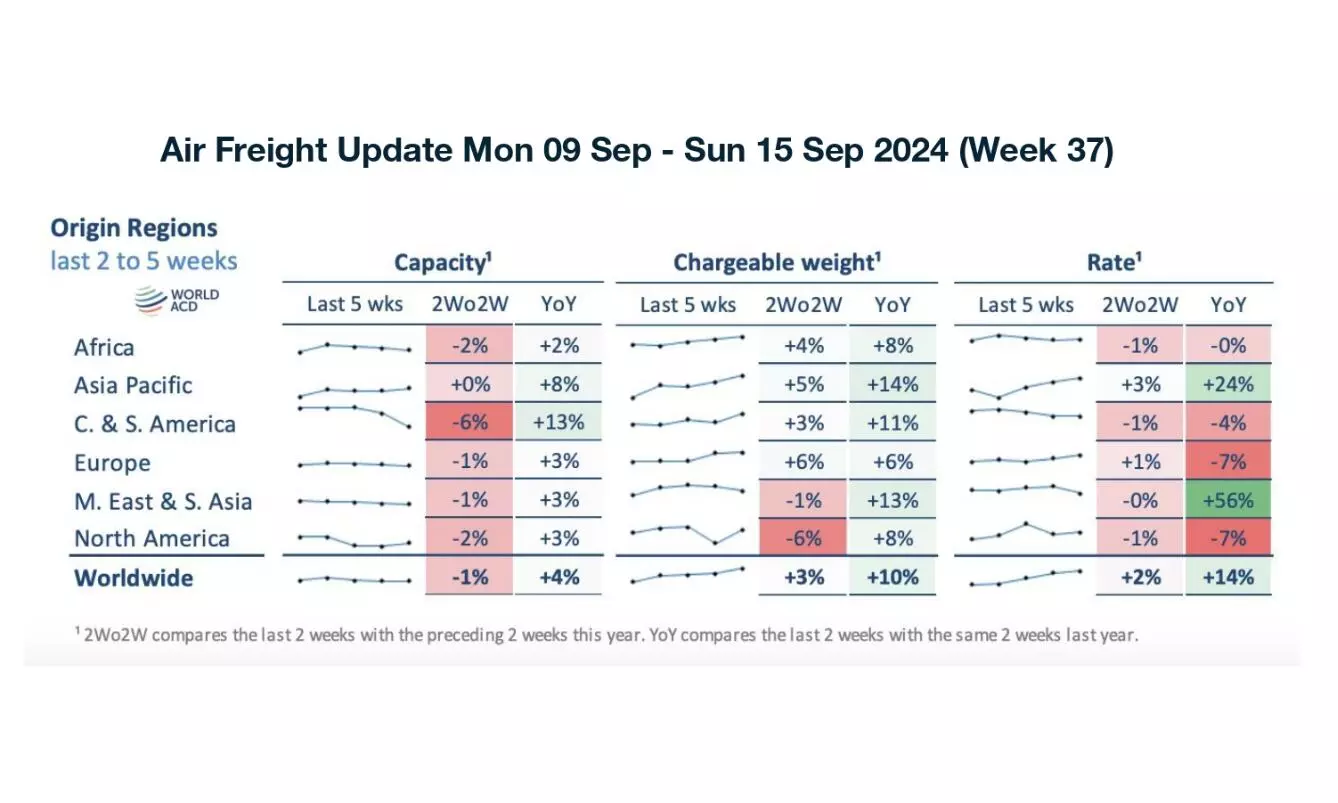
Air freight taking off for peak season with demand outpacing capacity
Shippers should explore alternative routes and services, such as sea-air options, which combine ocean and air transport to offer flexibility in timing and cost.

With the air freight market heading into its peak season, rates are surging, particularly in the Asia-Pacific region, where demand is rapidly outstripping capacity.
Thomas Kempf, Senior Director of Airfreight Business Development at Flexport, said, “We are seeing the air freight market take off as we enter Q4, with demand picking up significantly,” pointing to rising rates, particularly from the Asia-Pacific region, which is expected to continue climbing as peak season intensifies.
He was speaking at a webinar organised by Flexport on September 24, 2024, on the state ocean and airfreight market.
“We can see the rates increasing, not just year on year, but also on a two-week on two-week (2Wo2W) trend by two percent,” he said.
He also noted the Asia Pacific, South Asia and Middle East regions pushing it further. “The freight rate increase is largely attributable to the Asia Pacific region, but also the Middle East and South Asia. These are the two major regions that drive this development of the rates, and they continue to do so, and are expected to do so in the remainder of Q4,” he added.
Talking about the freight rate expectations for Q4, he noted that China to US lane may see more.
“The current demand versus supply situation from China to the US is not favorable. There's more demand than supply, compounded by the e-commerce trend. Consequently, we can expect rates to remain high. We have already seen slight increases in what is already a very tight market.”
To understand the increase in rates he urges us to look at the capacity situation. “Year on year, overall capacity showed one percent growth but it has been hovering around the stable number of around zero to -1 and +1 percent in the past weeks. So that also means we are back to pre-Covid-19 levels,” he said.
Airfreight market has stable capacity but the demand is picking up very strongly with 10 percent YoY growth.
“The 2Wo2W trend of 3 percent increase is just what we expect as we start the Q4 peak season.”
On the demand side he took examples of Bangladesh and Dubai.
“They're tremendously growing, not just on the rate side, but also on tonnage. In particular, Dubai saw 50 percent tonnage growth four weeks on four weeks,” he said.
Some of the factors influencing this include the Red Sea crisis, as well as the high demand from Southeast Asia to Europe.
As the air freight market enters its busiest season, Kempf stressed the need for shippers to remain flexible and prepared for continued uncertainty. Fuel prices, economic conditions, and the ongoing e-commerce boom will all play crucial roles in shaping the market in 2025. While capacity is expected to stabilise, regional imbalances will likely persist, keeping rates elevated in certain trade lanes.
"The key to navigating air freight in 2025 will be staying agile, understanding the drivers, booking early, and diversifying your options," Kempf concluded.
Additionally, Kempf recommended shippers explore alternative routes and services, such as sea-air options, which combine ocean and air transport to offer flexibility in timing and cost. "Sea-air solutions via hubs like Dubai or Incheon can offer transit times of 21 to 24 days and provide a good alternative for goods that can tolerate slightly longer transit times," Kempf said.
He also highlighted the importance of reducing shipment sizes to maximize access to available capacity. "Smaller batch sizes—around 15-20 cubic meters—will help secure space and reduce the risk of delays, particularly if there are any strikes or disruptions in ocean shipping that push more cargo into the air," Kempf explained.

